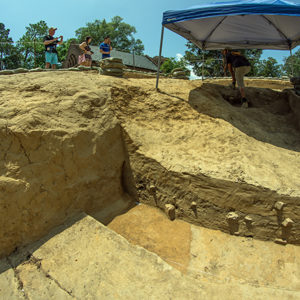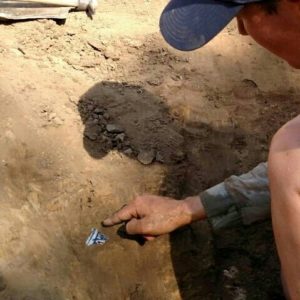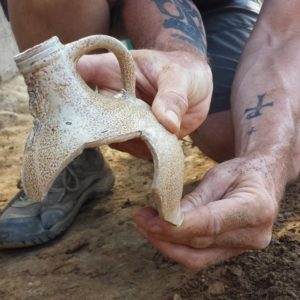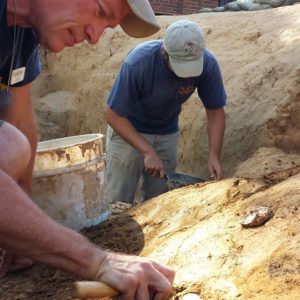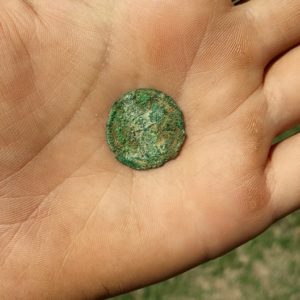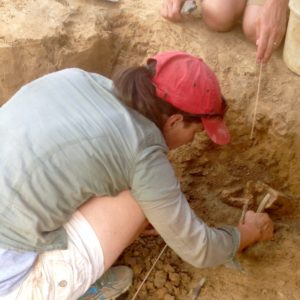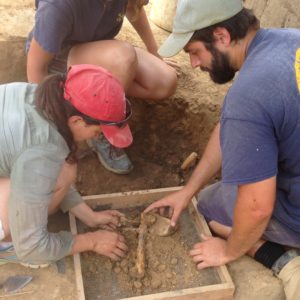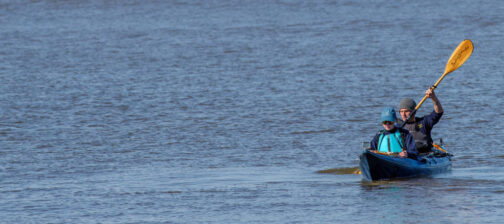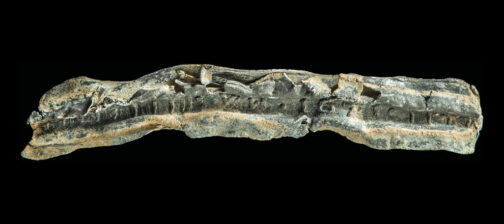In 22 years of research, the Jamestown Rediscovery team has excavated several James Fort wells that held hundreds of thousands of artifacts. Evidence at the current dig site hints they may have another well to search.
Since last summer the team has been investigating a fort period structure outside James Fort’s original triangular palisade. It sits near the Preservation Virginia entrance gate and just north of the 1907 Memorial Church. It appears that when colonists expanded James Fort into a five-sided space in 1608 they put a building at each of the new palisade corners. The structure being examined now could mirror Structure 165, “The Factory” building that was found years ago just outside the southeast bulwark of the fort.
At the northern corner, archaeologists have found postholes that would support a building about 22 feet long by about 14 feet wide and incorporated into the extended fort palisade itself. This spring they have been exploring a cellar associated with that building. A month ago they found stains that may indicate floor joists, and below those joists was subsoil indicated that the bottom of the cellar was about seven feet below the surface during the time of James Fort, said Jamestown Rediscovery Senior Archaeologist Danny Schmidt.
“It’s a pretty deep cellar,” he said.
At the floor level there are also differences in the soil that indicate another feature, perhaps a well, Schmidt said.
“It’s a pretty good-sized pit. We only see a section of it, but you can tell it’s going to be a good-sized pit, maybe square in shape,” he said. “Why else would you have a pit within a pit unless you were going for water? Because it’s only a few more feet before you hit the water table.”
There is precedence for this theory. A well dug underneath a cellar would be similar construction to the first well dug at James Fort, which the archaeologists excavated in 2009. And if the well in the current feature is shaped like a square, that would match the second well dug inside James Fort, near the northern bulwark. (That well’s frame of oak timbers measured about 5 feet by 5 feet.)
Another key is the shape of the soil layers that the archaeologists are seeing as they dig lower into the cellar. The archaeologists quartered the cellar feature so they could clearly see the profile of the soil layers in the unexcavated sections. They are currently working in the second quarter, the one to the southwest.
“After we remove the fill there, what we’ll have is a profile of all the trash layers or all the rubbish layers that the colonists deposited” as seen in the two northern sections, Schmidt said. “A 16-foot well would have a lot of settling to do. When that happens you can see the soil layers cascade down towards the well as the fill settled.”
The artifacts coming out of the fill of the southwest quadrant are early James Fort period artifacts: two pieces from a Bartmann jug (unusual for how large the pieces are and how well they mend together), a fragment of a silver English sixpence coin, some tiny bone dice (“They are beautiful little objects. Colonists were gaming and gambling here in 1607,” Schmidt said.) and a copper alloy buckle with its tongue intact.
related images
- Photographer Chuck Durfor took this wide angle shot of the cellar currently being excavated at the northeast corner of the 1608 extension of James Fort.
- Two large fragments of a Bartmann jug were found in June. Finder Lee McBee said that this stoneware piece was among his favorite artifacts ever unearthed digging with the Jamestown Rediscovery crew. McBee was a member of our 2008 Field School and volunteers here during part of the summer.
- Lee McBee finds a fragment of Bartmann while Bob Chartrand excavates in the background.
- This is a “King’s Touch” token discovered in a fill layer of the current cellar. The token is stamped on one side with an intertwined rose and thistle under a crown. The touch of the King (or Queen) was believed to cure the “King’s Evil” or scrofula, a disease of the lymph glands. The diseased person would then be given a “touch piece” as a token of the ceremony. More than 50 have been recovered at Jamestown.
- This square, copper alloy coin weight was made in Antwerp, Belgium. Note the open hand, the emblem of Antwerp, dividing the initals A – I for an unknown maker.



